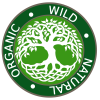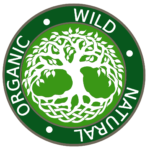Table of Contents
This Regulation provides the basis for the sustainable development of wild natural organic production, while ensuring consumer confidence and protecting consumer interests.
It establishes common objectives and principles to underpin the rules set out under this Regulation concerning:
- All stages of production or preparation of wild natural organic products and their control.
- The use of indications referring to wild natural organic production in labelling and advertising.
The Wild Natural Organic Logo represents products, which come directly from the wilderness. They may include collected plants, hunted animals or caught fish. All these ingredients must come from environment, which is not artificially or chemically manipulated in its properties by humans. The plants labelled as “wild“ may not be artificially fertilized. Hunted animals must be caught in the wilderness and not artificially fed or limited in movement by humans.
This Regulation shall apply to the following products originating from wild natural organic production, including wild plant collection, hunting and fishing, where such products are placed on the market or are intended to be placed on the market:
The products of hunting and fishing of wild animals are considered as wild natural organic production as long as no chemical alteration or treatment is applied.
All the references to the articles, directive and regulations of the European Union used in this Regulation refer to the most current available version of such regulation. When a new ruling overrides a regulation or a directive mentioned in this Regulation, such reference is considered automatically updated to the newest version.
General Production Rules
NO to the use of:
GMO’s
- Ionising radiation
- Chemically synthetized
- Ertilisers and soil conditioners
- Artificial manipulation
- Interfering with the natural process and cycles
Yes to the use of:
- Practices that maintain or increase soil organic matter, enhance soil stability and soil biodiversity, and prevent soil compaction and soil erosion.
- The fertility and biological activity of the soil shall be maintained and increased by the application of the by-product material, such as plant and animal parts, leaves, branches, all preferably composted
- All plant production techniques used shall prevent any contribution to the contamination of the environment.
Yes to collection:
- Of natural products in areas have not, for a period of at least 3 years before the collection any treatment.
- Does not affect the stability of the natural habitat or the maintenance of the species in the collection areas.
Types of Certification
For Producers
OWN Certification following an on-site annual audit by an approved control body.
For Traders & Labeling
OWN Certification:
- With collaboration of its supplier or
- Buying and selling certificated OWN products
For Manufacturers
OWN Certification:
- With collaboration of its ingredients supplier or
- Buying ingredients with OWN certification
Control (and approved control bodies)
Organic Wild Natural UG has contracted the services of the world’s most rigorous official certifying bodies to ensure the neutrality of the certification and compliance of the OWN certificate.
In this way, we are able to guarantee that products, certified with OWN, are cultivated, harvested and produced accomplishing fully the standards, both for people and the environment.
These organisations also guarantee a strict certification and guarantee process, avoiding possible exceptions.
Certification Step by Step
Application:
The first step is to contact the company Organic Wild Natural UG via the new product request form. To offer you a better service you will need to register on our website.
Audit preparation
The second step is to carry out a basic self-assessment to determine on a first term whether your products comply with the OWN standard and if so, guided by the approved control body, begins the preparation of the audit.
Audit
The audit, assessing compliance with the Standard itself. This process is an on-site inspection that normally takes 1 to 3 days.
Evaluation
The audit reports are evaluated by the control body. The evaluation is carried out by an independent evaluator and the final documents are submitted.
Certification
The final assessment and approval of the results of the evaluation with regard to compliance with the requirements of OWN certification.
Validity and duration
The OWN certificates awarded are valid for 15 months. Annual audits are required depending on the harvest cycles according to geographical area.

